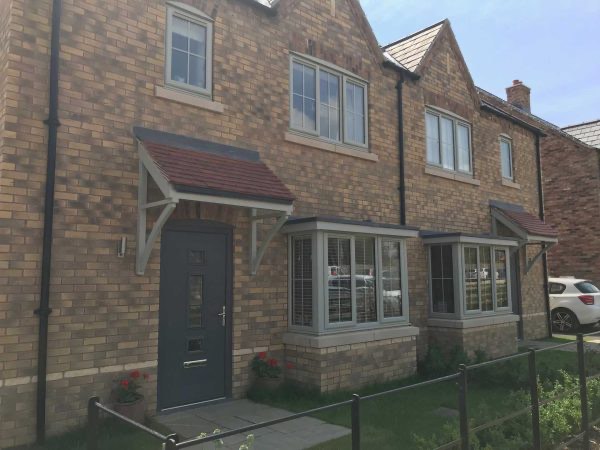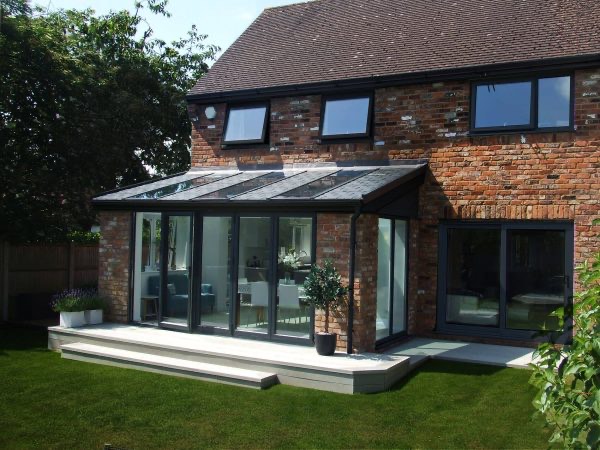
Understanding Energy Efficiency Ratings
Reducing your home's energy usage is an easy way to lower your bills and carbon footprint. Keeping your home warmer for longer is key when it comes to energy efficiency. Properties lose a large percentage of heat through their windows and doors, so the more energy efficient your glazing, the better.
If you are looking for ways to reduce your home's energy usage, investing in energy efficient appliances and installations is a wise place to start. Here at Bluemanor Windows, we recognise that understanding energy ratings can be difficult, and that is why our experts are here to help.
In this article, we are sharing everything you need to know about energy efficiency ratings.

Energy Efficiency Ratings Explained
Many homeowners prioritize reducing energy usage. Energy rating systems make it easier for people to make energy informed decisions. Everything from your washing machine to your front door will have an energy rating. However, things can get slightly confusing as the rating systems used are not all the same.
Household appliances receive their energy label from the Energy Saving Trust, and the rating system has recently changed. In the past, the energy rating ran from A+++ to D. Changes were made to the ranking system in 2021, and appliances are now rated between A and G. A rated appliances are the most energy efficient and the best investment for your future bank balance and the health of the planet.

How Are Windows & Doors Tested For Energy Ratings?
Windows and doors are also tested for energy efficiency, but they have a slightly different rating scale. Delivered by the BFRC (British Fenestration Rating Council), window energy ratings range from A++ to E. WERs (Windows Energy Ratings) and DERs (Door Energy Ratings) are received once the entire profile has been tested on its thermal performance.
When establishing the energy efficiency of windows and doors, 3 measurements are used:
• U- Value - The U - Value is the measurement used for thermal transmittance. Homes lose a large percentage of their heat through their windows and doors, and the U value is calculated to discover how much warm air is lost. Windows and doors with high U values are not as energy efficient as those with a smaller measurement. For example, windows with a U - Value of 0.95 W/m2K, better retain heat than profiles with a U - Value of 1.5 W/m2K.
• G- Value - Along with keeping warm air inside, windows and doors also allow heat from the sun to enter a property. The G value is measured between 0 and 1 and is used to determine how much of the sun's heat is able to make its way inside. Windows with a G value of 0 let in no heat from the sun and a value of 1 means all of the solar heat can pass through.

• L - Value - The final measurement used to determine an energy efficiency rating is the L value. Airtight windows are essential for heat retention and less air leakage equates to improved energy efficiency. L values are also measured in W/m2K, and the lower the value the more airtight the window will be.
When assessing windows and doors for energy efficiency, all of the above data is taken into consideration. Property size, occupancy, window size and climate data are also factored into the energy efficiency calculation process. All of the various measurements and factors are used to generate an Energy Index Score. This index spans from -40 to 20+ and A++ rated windows achieve a result of 20+. E rated windows are the least energy efficient and score -40.

What Is a Good Energy Efficiency Rating For Windows?
If you want to keep your home warmer for less, update your property's windows and doors. Choose profiles with a minimum of A rating for maximum energy efficiency. These windows and doors have demonstrated high levels of heat retention, solar gain and minimal air leakage. To comply with UK building regulations, all new windows must achieve a WER of B or above.
There are many benefits of investing in energy efficient windows and doors, including:
• Reduced energy bills
• Lower carbon footprint
• No cold draughts
• Improved heat retention
• More environmentally friendly
• Increase property value

Enhance Your Home's Energy Efficiency With Bluemanor Windows
At Bluemanor Windows, we install a large range of energy efficient home improvements. We also offer homeowners across Essex an extensive selection of double glazed windows and doors.
Achieving an energy rating of A+14 as standard, the highest energy rating you can achieve on a double-glazed window, our uPVC Windows and Doors will ensure your home stays at a comfortable temperature throughout every season. Our window and door range includes a large selection of stylish, secure, durable and energy-efficient profiles.
Browse our full window and door ranges and request a free quote today. To discuss your double glazing installation with our expert team, call 01376 322 266 or fill out our online contact form.
Frequently Asked Questions
How Does Energy Efficiency Ratings Work?
Tests need to be carried out to determine the energy rating of appliances and products. These tests will rate their energy efficiency on a scale of A to G. If a product has an ‘A’ energy rating, that means that they are deemed to be the most energy efficient product of its class – while G is the least efficient.
You may also encounter A+ energy ratings. What this means is that the product is 10% more energy efficient than the average efficiency range of A.
What is WER?
WER stands for Window Energy Ratings, which is a colourful label that helps homeowners identify the overall energy efficiency of their windows. The BFRC (British Fenestration Rating Council), provides this label after determining the performance of the full window structure, such as the frame and glazing.
How Are Energy Ratings Calculated?
Calculating the energy ratings of windows and other home improvement products is a lot more simple than one might think. These 4 key things that are considered when determining the thermal efficiency of a window are:
- U Values
- Solar heat gain
- Air leakage
- Windows materials/structure
When you combine all of these together, you get an accurate calculation of a window’s energy rating.
What Are U Values?
A U Value is known as thermal transmittance, which is the rate at which heat transfers through a structure, such as a windows, glazed doors and conservatories, divided by the temperature difference of that structure.
It can be complicated to understand fully what U values are but the most important thing is to know which thermal performance scores to look for. There is a full spectrum of numbers, but when looking at U Values, the rule of thumb is that the lower the U-value, the better.
With Bluemanor’s double-glazed windows, you can achieve U Values as low as 1.3 as standard with our double glazing and values as low as 0.93 with our triple-glazed windows.
What Energy Rating is Good?
As noted above, energy ratings are decided on a scale of A to G. Although A is the best and G is the lowest, it doesn’t mean that the letters in between are bad. If your windows or home has a ‘B’ energy rating, your property is still considered highly efficient. While a ‘C’ rating represents an average energy efficiency, ‘D’ through to ‘G’ highlights poor energy efficiency.
Unfortunately, the majority of homes in England and Wales fall into this bracket. However, by upgrading your windows and doors with the latest glazing specifications and most advanced materials, your home’s thermal performance can improve massively.
Recent News
Can You Turn Your Conservatory into an Extension?
19 March 2025
Window Styles for Period Properties
12 March 2025
















































